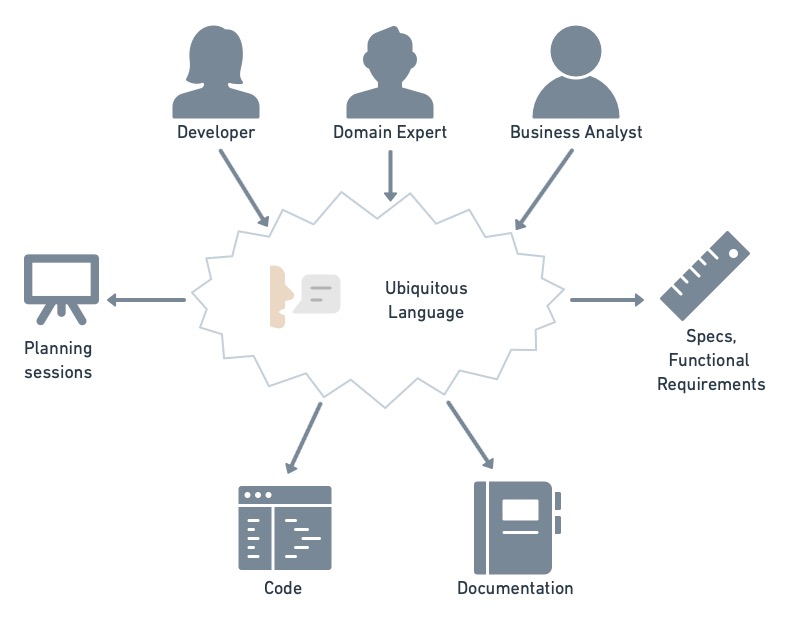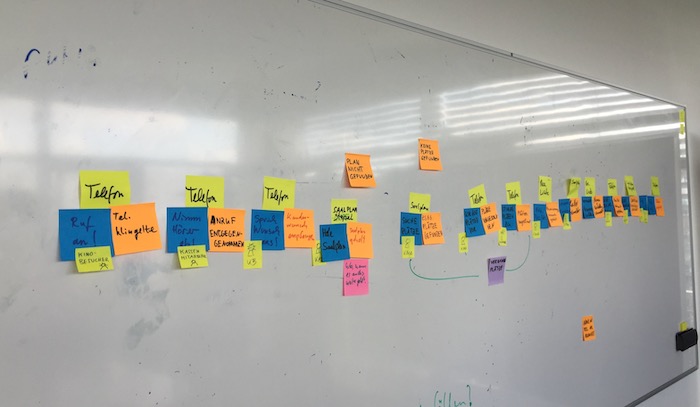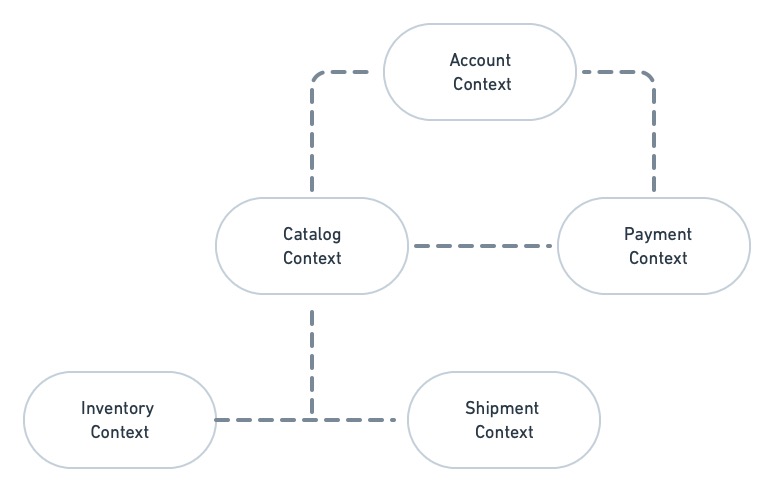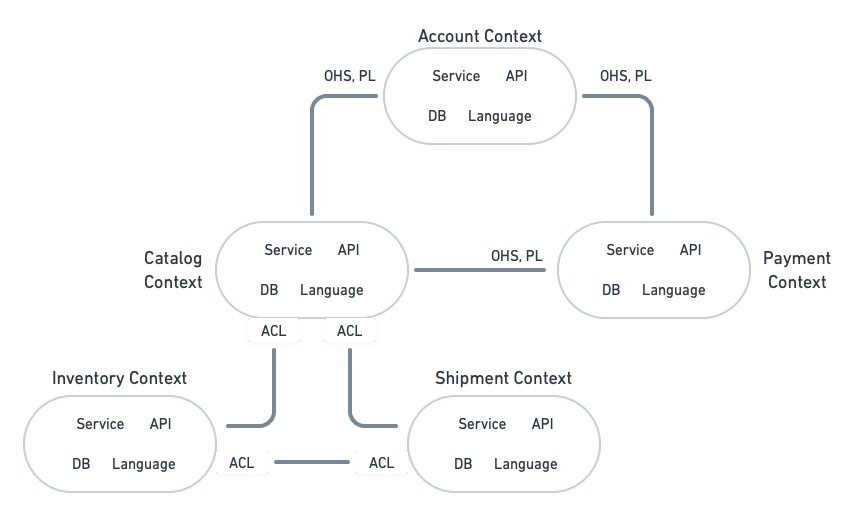Applying Domain-Driven Design Principles to Microservice Architectures
In this article, we'll learn the basics of Domain-Driven Design and how to apply it to microservices. Microservices are the most scalable way of developing software.
Join the DZone community and get the full member experience.
Join For FreeMicroservices are the most scalable way of developing software. But you need a good design that lets developer teams work autonomously and deploy without stepping on each other's toes; otherwise, you lose most of the scalability benefits.
Domain-Driven Development allows us to plan a microservice architecture by decomposing the larger system into self-contained units, understanding the responsibilities of each, and identifying their relationships. In this article, we'll learn the basics of Domain-Driven Design and how to apply it to microservices.
What Is Domain-Driven Design?
Domain-Driven Design (DDD) is a software design method wherein developers construct models to understand the business requirements of a domain. These models serve as the conceptual foundation for developing software.
According to Eric Evans, author of Domain-Driven Design: Tackling Complexity in the Heart of Software, a domain is:
A sphere of knowledge, influence, or activity. The subject area to which the user applies a program is the domain of the software.
How well one can solve a problem is determined by one’s capacity to understand the domain. Developers are smart people, but they can’t be specialists in all fields. They need to collaborate with domain experts to guarantee that the code is aligned with business rules and client needs.

The two most important DDD concepts for microservice architecture are bounded contexts and context maps.
Bounded Context (BC)
The setting in which a word appears determines its meaning. Depending on the context, “book” may refer to a written piece of work, or it may mean “to reserve a room.” A bounded context (BC) is the space in which a term has a definite and unambiguous meaning.
Before DDD, it was common practice to attempt to find a model that spanned the complete domain. The problem is that the larger the domain, the more difficult it is to find a consistent and unified model. DDD’s solution is to identify BCs so that the domain can be broken down into manageable subdomains.

In software, we need to be exact. That is why defining BCs is critical: it gives us a precise vocabulary, called ubiquitous language, that can be used in conversations between developers and domain experts. The ubiquitous language is present throughout the design process, project documentation, and code.
Context Map
The presence of a BC anticipates the need for communication channels. For instance, if we’re working in an e-commerce domain, the salesperson should check with inventory before selling a product. And once it’s sold, it's up to shipping to ensure delivery of the product to the correct address. In DDD, these relationships are depicted in the form of a context map.

Domain-Driven Design for Microservices
DDD takes place in two phases:
In the strategic phase, we identify the BCs and map them out in a context map.
In the tactical phase, we model each BC according to the business rules of the subdomain.
Let’s see how each phase plays a role in microservice architecture design.
Strategic Phase
During this phase, we invite developers, domain experts, product owners, and business analysts to brainstorm, share knowledge and make an initial plan. With the aid of a facilitator, this can take the form of an Event Storming workshop session, where we build models and identify business requirements starting from significant events in the domain.

In strategic DDD, we take a high-level, top-to-bottom approach to design. We begin by analyzing the domain in order to determine its business rules. From this, we derive a list of BCs.


The boundaries act as natural barriers, protecting the models inside. As a result, every BC represents an opportunity to implement at least one microservice.
Next, we must decide how BCs will communicate. Eric Evans lists seven types of relationships, while other authors list six of them. Regardless of how we count them, at least three (shared kernel, customer/supplier, and conformist) imply tight coupling, which we do not want in a microservice design and can be ignored. That leaves us with four types of relationships:
Open Host Service (OHS): the service provider defines an open protocol for others to consume. This is an open-ended relationship, as it is up to the consumers to conform to the protocol.
Published Language (PL): this relationship uses a well-known language such as XML, JSON, GraphQL, or any other fit for the domain. This type of relationship can be combined with OHS.
Anticorruption Layer (ACL): this is a defensive mechanism for service consumers. The anti-corruption layer is an abstraction and translation wrapping layer implemented in front of a downstream service. When something changes upstream, the consumer service only needs to update the ACL.
Separate ways: this happens when integration between two services is found, upon further analysis, to be of little value. This is the opposite of a relationship — it means that the BCs have no connection and do not need to interact.
At the end of our strategic DDD analysis, we get a context map detailing the BCs and their relationships.

Tactical Phase
In this phase, we delve deep into the subdomains and create models.
Domain-Driven Design Is Iterative
While it may appear that we must first write an exhaustive description of the domain before we can begin working on the code, the reality is that DDD, like all software design, is an iterative process.
On paper, bounded contexts and context maps may appear OK, but when implemented, they may translate into services that are too big to be rightly called microservices. Conversely, chatty microservices with overlapping responsibilities may need to be merged into one.
As development progresses and you have a better understanding of the domain, you’ll be able to make better judgments, enhance models, and communicate more effectively.
More Ways of Designing Microservices
DDD is undoubtedly a theory-heavy design pattern. As a result, it is only recommended when the system under development is complex enough to warrant the extra planning work.
Other methods, such as Test-Driven Development (TDD) or Behavior-Driven Development (BDD), may be enough for smaller, simpler systems. TDD is the fastest to start with and works best when working on single microservices or even with applications consisting of only a few services.
On a bigger scale, we can use BDD, which forces us to validate the wholesale behavior with integration and acceptance tests. BDD may work well if you work on low to medium-complexity designs, but once you hit a certain threshold, maintaining the tests can slow you down.
You can also combine these three patterns, choosing the best one for each stage of development. For example:
Identify microservices and their relationships with strategic DDD.
Model each microservice with tactical DDD.
Since each team is autonomous, they can choose to adopt BDD or TDD (or a mix of both) for developing a microservice or a cluster of microservices.
DDD can feel daunting to learn and implement, but its value for developing a microservice architecture is well worth the effort.
Published at DZone with permission of Tomas Fernandez. See the original article here.
Opinions expressed by DZone contributors are their own.

Comments